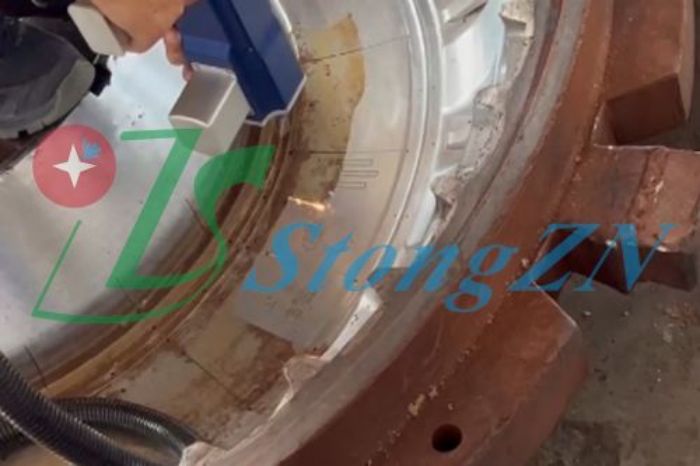As the "feet" of a car, rubber pneumatic tires are an indispensable part of automobile manufacturing. During the production process, the shape of the tire is formed by rubber vulcanization in the tire mold. The safety, drainage, grip, and driving comfort of the tire are all closely related to the mold.
Usually, after repeated use of the mold, there will be more or less residues of pollutants such as rubber and mold release agent in the pattern and groove in the mold cavity. After accumulation to a certain extent, it will lead to defects such as irregular surface of the finished tire, thus making the product a defective or waste product. Therefore, regular cleaning of the mold is crucial. If the residue is placed on the surface of the untreated mold for too long, it will also cause damage to the mold.

So far, there are still many companies choosing chemical cleaning, manual grinding, sandblasting cleaning and other methods. If manual cleaning uses coarse-grained scrubbing gaskets, emery cloth, sandpaper, grindstone or brushes with nylon bristles, brass or steel to manually grind the mold, it will cause excessive "cleaning" of the mold, and the use of sandblasting cleaning has dust and noise pollution, and high energy consumption. And neither can meet the high requirements of energy conservation, emission reduction, low carbon and environmental protection of modern tire production processes. Sandblasting cleaning will also make sand and gravel adhere to it, and unclear washing will lead to defective products in subsequent production. With the improvement of enterprises' requirements for mold quality, the innovation of cleaning technology has become urgent. With the gradual improvement of national environmental protection requirements, some local governments have included mold sand washing machines in the type of environmental protection substandard.
The laser mold washer developed by Shengtong Intelligent Laser has overcome these problems and can effectively solve the pain points and difficulties of traditional cleaning methods such as "long standby time, repeated disassembly, mold wear, incomplete cleaning, environmental pollution, and high energy consumption", thereby reducing downtime, improving production efficiency and tire quality, and opening a new era of "green and automated" tire mold cleaning.
Driven by the "double carbon" goal, promoting green production processes and achieving industrial upgrading have become the main development direction of China's tire industry. As a global tire production and consumption power, China has broad prospects for the tire mold laser cleaning market. Shentong Intelligent Laser will continue to expand product application scenarios, strengthen the research and development and application of "green and low-carbon" technology, and empower the transformation and upgrading of traditional industries.





